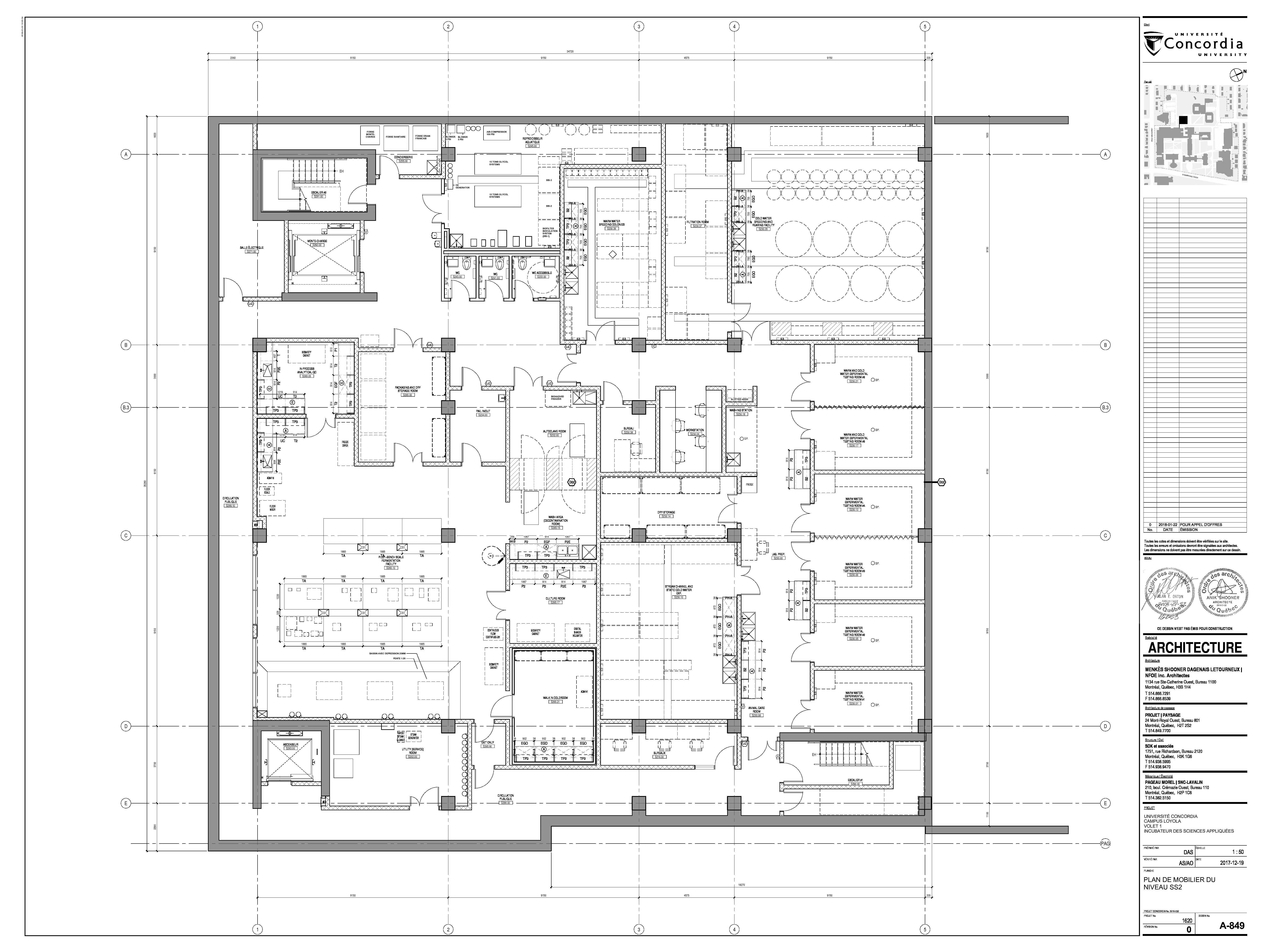Concordia University
Concordia University
| Institution: |  |
| Location: |
Montreal, Quebec, Canada
|
| Contact: | Ailenn Murray Animal care, director |
| Laboratory: | Technical Planning of Concordia University’s New Aquatic Facilities |
| Species: | Trout, Brook trout, Salmon,tropical fish, Guppy, Cichlids; |
| Habitats: | Fresh water ; |
| Temperature: | 3° to 15° C; |
| Description: |
|
| Total rearing volume: | 65 m3 ; |
| Water recirculation level: | 99.7% (1 water exchange/5 to 6 days); |
| Work done: |
|
Concordia University
PROJECT SCOPE
Concordia University is planning the creation of a novel aquatic facility in a LEED-Certified Research Building soon to be constructed. This 550 m2 facility will be located at the Loyola campus, Notre Dame de Grace, in Montreal and will be used primarily by four researchers of the Biology Department and their Ph.D. students. The University wishes to evaluate what aquatic systems are appropriate for the research conducted by their team (open or closed circuit) while minimizing water consumption.
The aquatic laboratories will be located in the 2nd basement of the Applied Science Hub, in proximity of the existing animal care facility located in the SP building. The key considerations and Project scope in regards to these aquatic facilities include:
- Design for LEED gold certification;
- Connected to the campus central services;
- Provide aquatic research facilities planned according to CCAC design standards;
- Offer potential for expansion to accommodate growth, including new faculty members and additional research assistants;
- Designed to allow for the sharing of equipment and materials and include flexible hook-up services for minimizing equipment set-up times.
METHODOLOGY
The Web page of three academics, Drs James Grant, Dylan Fraser and Grant Brown, who are using the current facility were reviewed to obtain a general comprehension of their research activities. The aquatic lab was then visited by Hélène Drouin, biologist and consultant, who met with the researchers, architects and management. Each could convey their goals, methods or concerns.
A questionnaire was filled by all investigators, including Dr. Pedro Peres-Neto, new professor at U. Concordia. Topics such as rearing tank volumes, biomass loads, water recycling levels, environmental controls were tackled. Later the researchers were contacted individually for more specific information. Detailed answers, which can be reviewed in addendum, served as a basis for this report.
GENERAL LAYOUT OF THE AQUATIC FACILITY
A total of nine rooms will house fish.
- A cold water area for breeding and rearing salmonids;
- A stream channel and static cold water experimental space;
- A warm water space for breeding colonies of tropical fishes;
- Six experimental warm water rooms with large racks to accommodate aquariums, with nose and lighting control.
A central water treatment facility will offer the services (air, oxygen, water…), needed to operate these rooms optimally. All shall have a drain gutter set in place.



